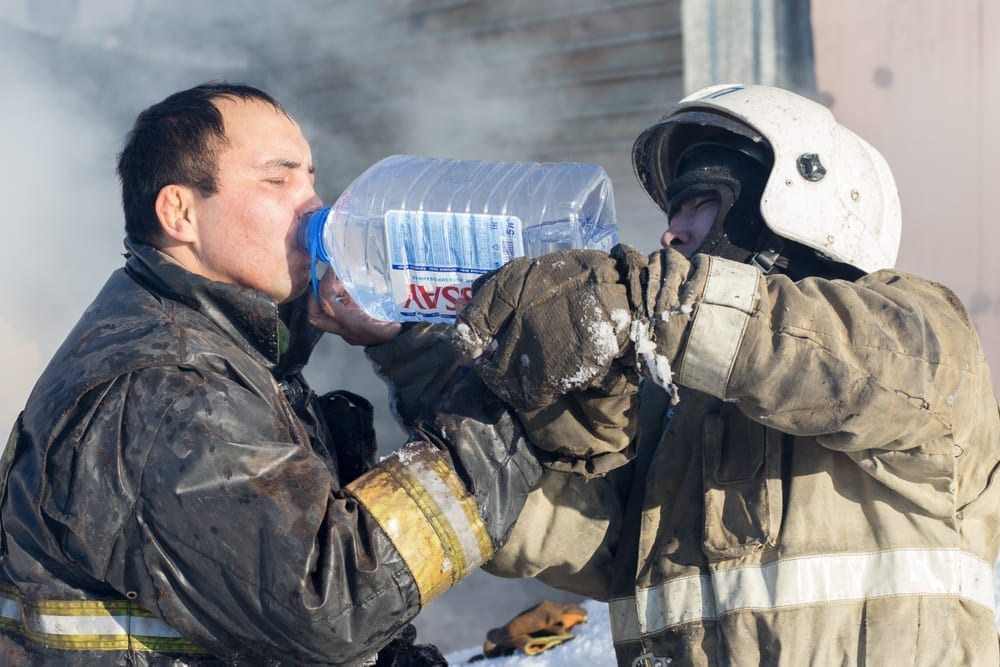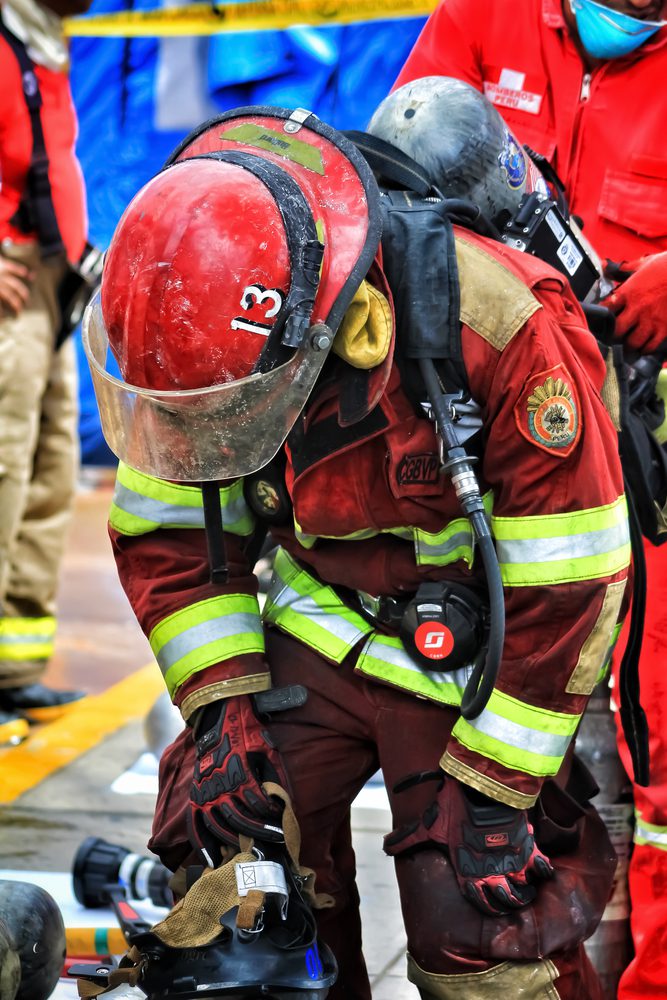By F. R. Montes de Oca, EFO
Fire Chief (ret)
Some of you may recognize the title as the opening lyrics to a popular 1980s song by Mungo Jerry. Life was simpler back then. You responded to the fire. Put wet stuff on the red stuff. Chief declared the fire out. Everyone grabbed a drink of water and back to the firehouse to wash the rig, hang your coat and revel in a job well done. Those days are gone.
Now, we deal with a host of threats – both manmade and natural. And one from the natural world is getting more complicated every day – climate change. This article isn’t about solutions to climate change. It’s about the actions we as chiefs, incident commanders, safety officers and individuals must take to keep responders (including ourselves) safe and healthy – high temp responder rehabilitation. 
The current OSHA-NIOSH INFOSHEET “Protecting Workers from Heat Illness” is an excellent source to develop or update guidelines pertaining to heat exposure. I will paraphrase several items in order to expedite the information:
Factors That Increase Risk to Workers
- High Temperature and Humidity
- Limited Air Movement
- Low Fluid Consumption
- Physical Exertion
- Heavy PPE
- Poor Physical Conditioning
- Health Problems
- Medications
- Pregnancy
- Advanced Age (65+)
Other than the last four bullets, all responders deal with these factors at most working incidents, whether it is a structure or vehicle fire, hazmat incident, extrication or other event requiring staffing, equipment and time.
Heat Cramps are muscle pains caused by the responder losing fluid and body salts during strenuous work. The outside temperature does not have to be significantly high (80’s-90’s). If responders are exerting excessive effort without sufficient breaks and/or rehydration, body cramps can occur. Often this situation will depend on an individual’s health and physical condition.

Treating Heat Cramps
- Responder to Rehab Area
- Cool Responder – Remove PPE
- Monitor Vital Signs
- Fluid (Electrolyte) Replacement*
*The treatment for heat cramps used to be salt tablets and water. Today electrolyte replacement solutions is an important component of heat-related illness treatment.
Beware of slick salespersons trying to sell you the latest and greatest whiz-bang electrolyte solution. Do your homework before committing to purchasing cases of stuff that may not be anything but sugar powder and caffeine. If you have a sports team in your area, seek out coaching staff. They are often on top of the current rehydration fluid replacement regimens recommended by college and medical research. Remember, your responders are athletes and should be cared for as such. The key is to make sure members are hydrating throughout the operation – preferably every 15 to 20 minutes. Before developing and/or updating your guidelines consult medical direction.
Every “working” operation (fire, vehicle extrication, hazmat call, etcetera) that is declared should have a safety officer assigned and rehab section established to ensure responder well-being.
Heat Exhaustion can be a serious heat-related medical problem. If left unaddressed (Safety officers are you listening?) it can transition to heatstroke.
Symptoms of Heat Exhaustion
- Headache
- Nausea
- Dizziness
- Weakness
- Irritability
- Thirst
- Heavy Sweating
- Elevated Body Temperature
Treating Heat Exhaustion
- Responder to Rehab Area (Assisted if necessary.)
- Cool Responder – Remove PPE
- Cold Packs to armpits, neck area (and groin depending on severity)
- Cool water flow over head
- Monitor Vital Signs
- Fluid (Electrolyte) Replacement
- Hospital Transport based on symptoms and local/agency medical protocols
Heat Stroke is a significant health problem affecting first responders working incidents during high-temperature days or dealing with some of the factors listed above. This serious medical event occurs when the responder’s temperature regulating system fails and body temperatures rise to critical levels. This is a medical emergency and must be addressed quickly and definitively.

Symptoms of Heat Stroke
- Confusion
- Loss of Consciousness
- Seizures
- High Body Temp (ä 103° orally)
- Hot, Dry Skin
- With or w/out Profuse Sweating
- Rapid, strong Pulse
Treating Heat Stroke
- Responder to Rehab/Treatment Area (Assisted if necessary.)
- Cool Responder Quickly – Remove PPE
- Cold Packs to armpits, neck area (and groin depending on severity)
- Cool water flow over head
- Cold Immersion Pool (if available – based on medical protocols)
- Monitor Vital Signs: Temp, BP, Pulse, EKG (if available)
- Fluid (Electrolyte) Replacement not advised due to LOC
- Hospital Transport based on local/agency medical protocols
Heatstroke is a life-threatening emergency that must be addressed without delay. Quick body cooling is the key to patient treatment. As soon as signs and symptoms determine heat stroke, medical transport is indicated.
Heat Index
The heat index is a measure of how it really feels when relative humidity is factored in with the actual air temperature. (1) This is the standard that most effective heat-related illness guidelines will reference.